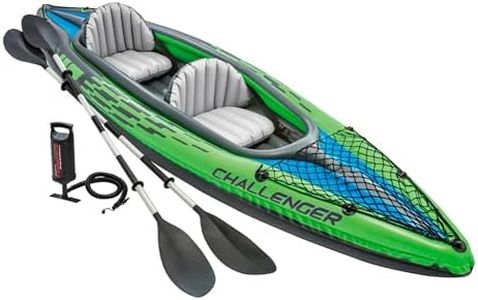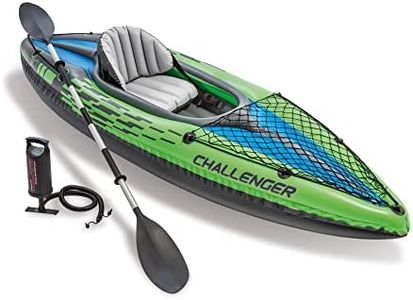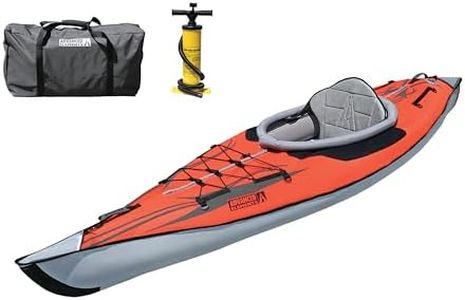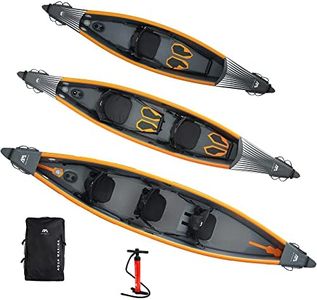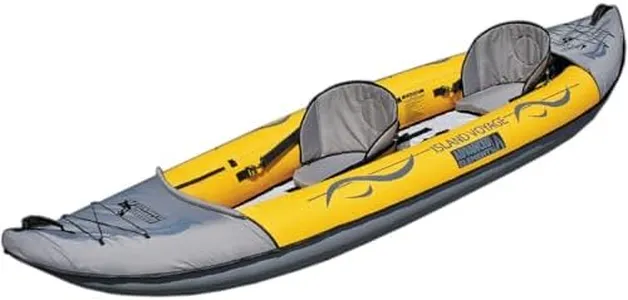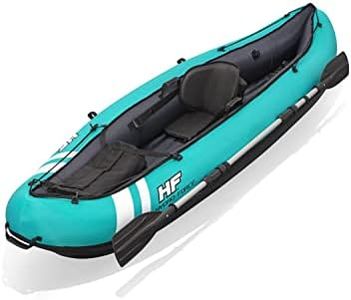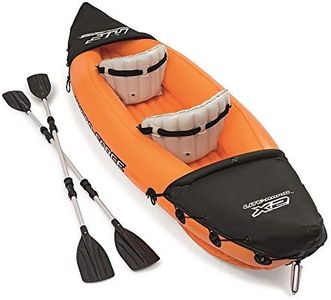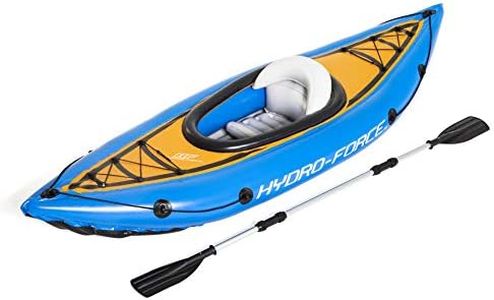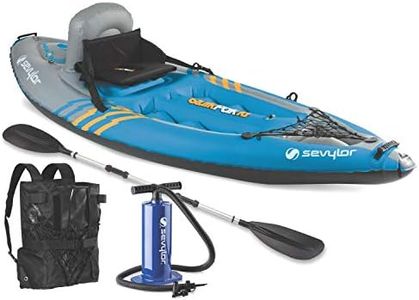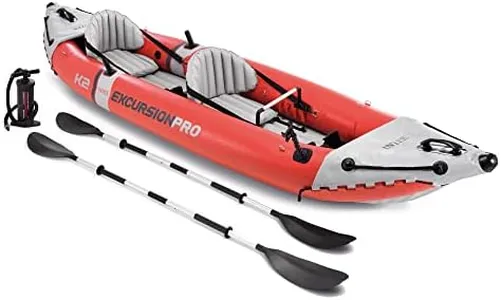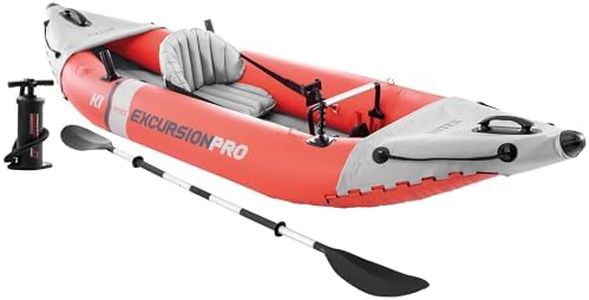We Use CookiesWe use cookies to enhance the security, performance,
functionality and for analytical and promotional activities. By continuing to browse this site you
are agreeing to our privacy policy
10 Best Small Kayaks For Adults
From leading brands and best sellers available on the web.Buying Guide for the Best Small Kayaks For Adults
Choosing the right small kayak for adults is all about matching the kayak's features with your intended use, body size, and experience level. Small kayaks are generally more manageable, easier to transport, and can be a great choice for beginners or paddlers looking for agility in the water. The key to a satisfying purchase is knowing how different specifications affect your experience and how to weigh them against your personal needs, whether you plan to navigate calm lakes, gentle rivers, or even venture into some light coastal waters.LengthLength refers to how long the kayak is from bow to stern. This is important because a shorter kayak (typically under 10 feet) is easier to turn and maneuver, making it great for tight spots or slower moving waters. However, shorter kayaks don’t glide as well and might not track as straight. Longer kayaks (around 10 to 12 feet for the small adult range) often move faster and track straighter but can be harder to control and transport. If you value portability and mostly enjoy leisurely paddling or exploring smaller lakes and streams, a shorter kayak is likely the best fit. If you want a bit more speed and plan to cover longer distances in a straight line, consider one at the upper end of the 'small' category.
WidthWidth measures how wide the kayak is at its widest point. A wider kayak generally offers more stability – this is great for beginners and those who might be nervous about tipping over. Narrower kayaks are less stable but can be faster and easier to paddle over long distances. If you're seeking maximum stability, choose a wider kayak (over 28 inches). For those who are more confident or want better performance, a narrower kayak (closer to 24-26 inches) could be the better choice. Think about your comfort level and how important stability versus speed is for your paddling plans.
Weight CapacityWeight capacity tells you how much total weight the kayak can safely support, including your body weight and any gear you bring. This is crucial for both safety and performance – too much weight can make a kayak unstable or sit too low in the water. Most small kayaks for adults have a range from 200 to 300 pounds. To pick the right one, add your weight plus the weight of any typical gear (like a backpack, water bottle, and safety equipment). Make sure the kayak’s capacity is comfortably above your total to avoid performance issues.
Hull ShapeThe hull is the kayak’s bottom shape, which affects how it feels in the water. Flat-bottomed hulls provide excellent initial stability, making them ideal for beginners and calm waters, while more rounded or V-shaped hulls are better for speed, tracking, and choppier water, but might feel less stable to a new paddler. Consider a flat or slightly rounded hull if stability and relaxation are your goals. If you’re interested in a sportier experience or tackling mild currents, look for a hull with more of a v-shape.
Cockpit SizeThe cockpit is where you sit in the kayak, and size can vary. Larger cockpits make it easier to get in and out and can feel less confining, which is nice for beginners or those who like freedom of movement. Smaller cockpits provide better control and protection and are often preferred by more experienced paddlers tackling rougher waters. Decide if comfort and easy entry/exit are your top priorities, or if you’re willing to trade that for a bit more control in your paddling.
Weight of the KayakThe weight of the kayak itself affects how easily you can transport, carry, and launch it. Lightweight kayaks, often under 40 pounds, are much easier to move around single-handedly, which is important if you plan to paddle solo or need to lift the kayak onto your car by yourself. Heavier kayaks might be more durable but can become a hassle if you have to move them often. Consider your own strength and how you’ll be transporting the kayak when deciding on a weight that works for you.
Type: Sit-on-Top vs. Sit-InsideSit-on-top kayaks have an open deck and are generally easier to get on and off, as well as more comfortable in warm weather because you’re more exposed. They're great for casual paddling and are forgiving if you tip over. Sit-inside kayaks offer more protection from the elements and often give more control in rougher water. These require a bit more maneuvering to enter and exit but can be better for longer or cooler trips. Think about where and how long you’ll be paddling, and your comfort with getting in and out, to choose the style that’s best for you.
